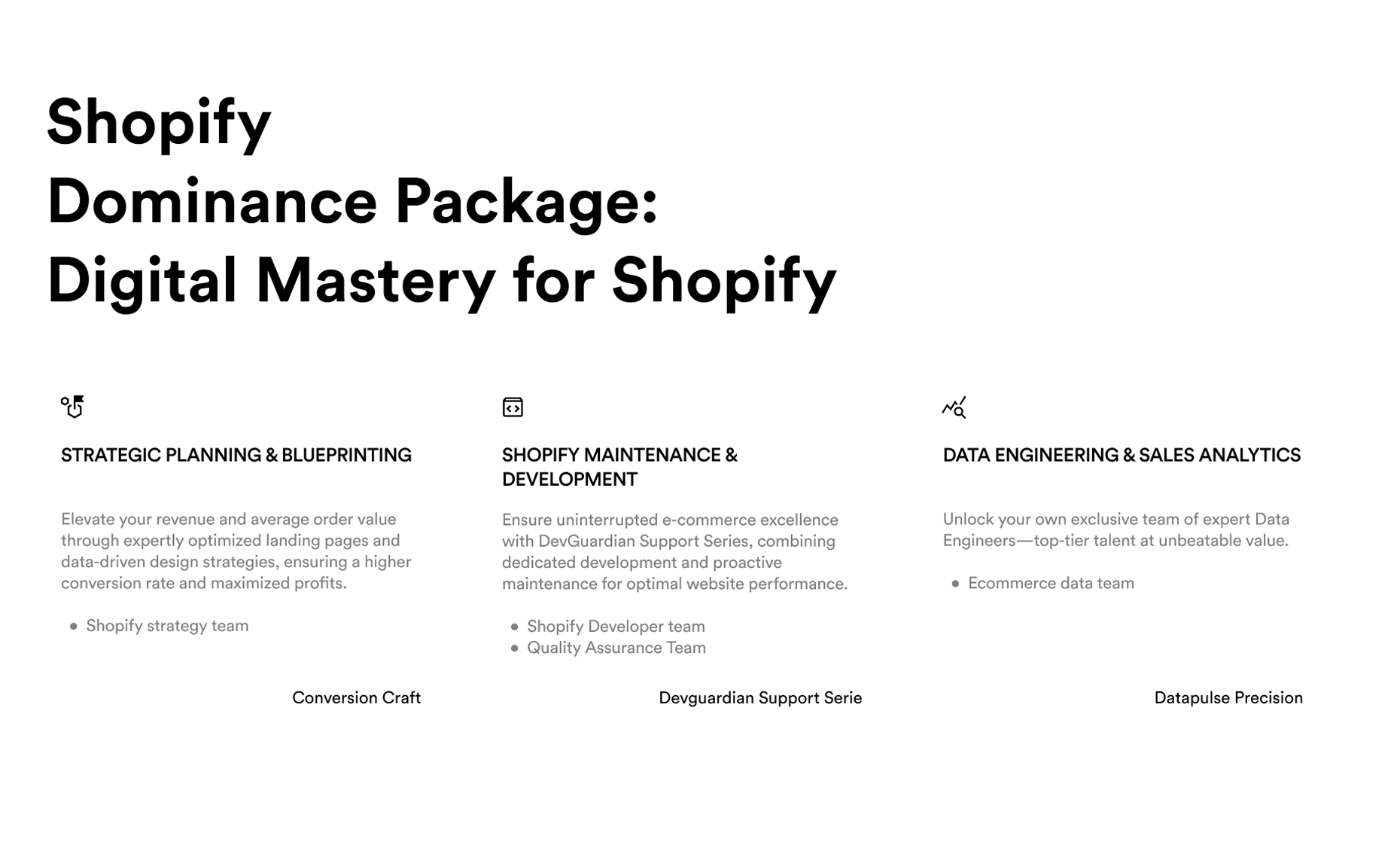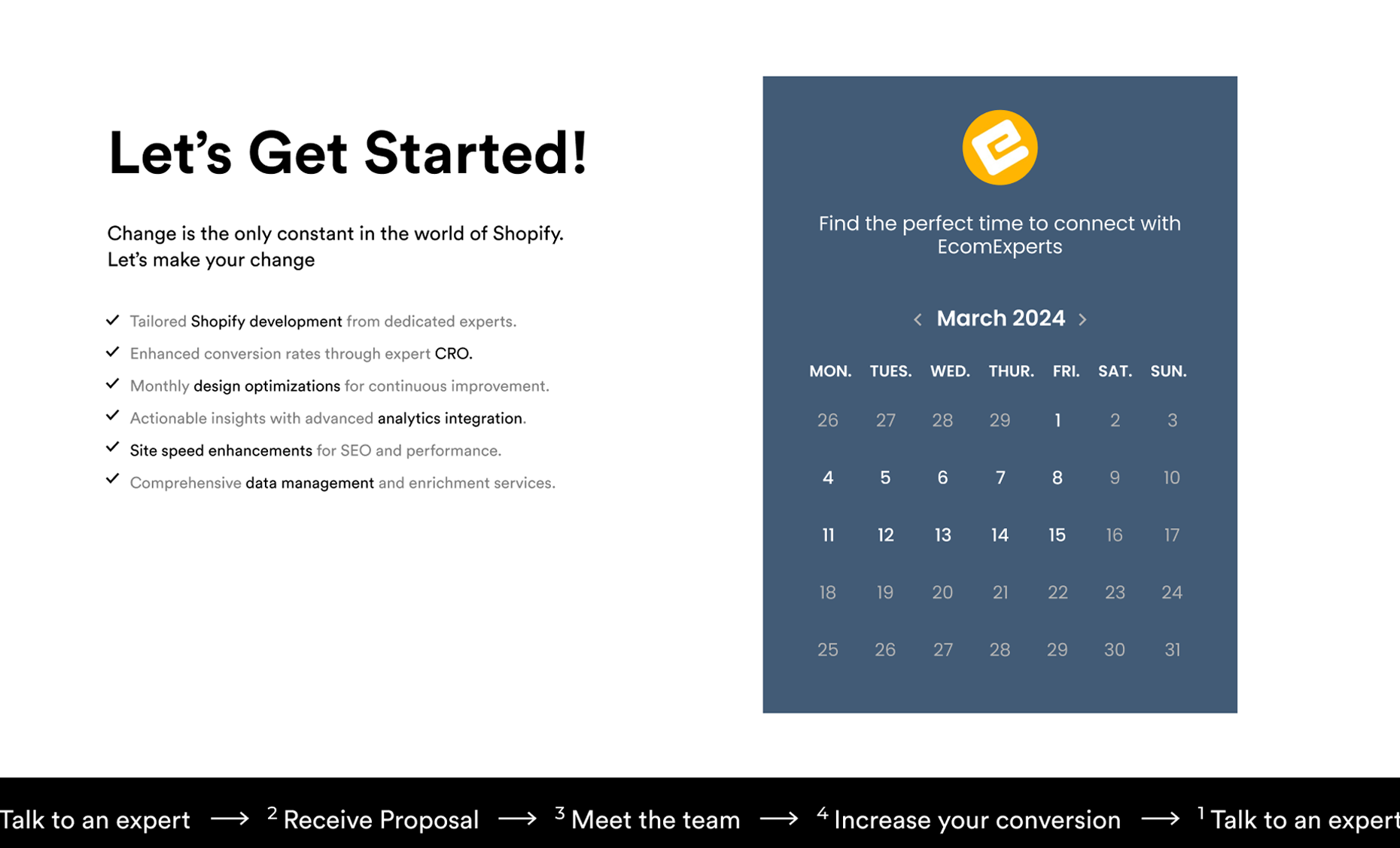Discover the ultimate showdown between Shopify and Magento as we delve into the latest updates and features of each e-commerce platform in 2024.
In today's rapidly evolving digital landscape, choosing the right e-commerce platform is crucial for the success of online businesses. Two popular options that often vie for the attention of entrepreneurs are Shopify and Magento. Both platforms offer robust features and cutting-edge technology to help businesses thrive in the ever-competitive online marketplace. In this article, we will delve into the key differences between Shopify and Magento, their user experiences, pricing and payment options, customization and flexibility, as well as security and support.
Understanding Shopify and Magento
Shopify and Magento are e-commerce platforms that have revolutionized the way businesses operate online. They provide a comprehensive set of tools and features to empower entrepreneurs in creating and managing successful online stores. While both platforms excel in their own right, they cater to different audiences and offer unique benefits.

Shopify, often favored by small to medium-sized businesses, is renowned for its user-friendly interface and streamlined design. It simplifies the process of setting up an online store, making it accessible even to those with limited technical expertise. In addition to its ease of use, Shopify offers a plethora of mobile-optimized themes and responsive designs, ensuring a seamless shopping experience across devices. Furthermore, businesses can benefit from secure and reliable hosting on Shopify servers, eliminating the need for external hosting services. The platform also boasts built-in payment gateways for effortless transactions and an extensive app marketplace where users can find tools to enhance their store's functionality.
Key Features of Shopify
Shopify is a powerhouse of features designed to support businesses at every stage of their e-commerce journey. From the simplicity of its store setup process to the convenience of its built-in payment gateways, Shopify is a one-stop solution for online retailers looking to thrive in the digital marketplace.
On the other end of the spectrum, Magento stands out as a robust open-source platform tailored for larger enterprises and organizations with complex e-commerce requirements. One of Magento's key strengths lies in its advanced customization options and flexible store design capabilities, allowing businesses to create unique and tailored online experiences for their customers. Moreover, Magento's scalability is unmatched, enabling it to handle high volumes of traffic and transactions without compromising performance.
For businesses managing multiple brands or websites, Magento offers multi-store management capabilities, streamlining operations and enhancing efficiency. Additionally, the platform provides a wide array of third-party integrations and extensions, empowering businesses to extend their store's functionality as needed. With advanced SEO and marketing tools, Magento equips users with the resources to drive traffic and boost conversions effectively.
Key Features of Magento
Magento's feature-rich platform is a testament to its commitment to providing enterprise-level solutions for businesses seeking unparalleled customization and scalability in their e-commerce endeavors.
Comparing the User Experience
The user experience plays a crucial role in the success of an e-commerce platform. Both Shopify and Magento prioritize providing users with a seamless and intuitive experience, albeit with differences in their approaches.
When it comes to e-commerce platforms, the user interface plays a significant role in shaping the overall experience for both merchants and customers. Let's delve deeper into the unique characteristics of Shopify and Magento to understand how they cater to different user needs and preferences.
User Interface of Shopify
Shopify's user interface is known for its simplicity and ease of use. The platform offers a clean and intuitive dashboard that allows users to navigate through various settings and features effortlessly. The drag-and-drop functionality and visual editor enable users to customize their online stores without any coding knowledge.
Moreover, Shopify's user interface is designed to streamline the process of setting up an online store. From adding products and managing inventory to processing orders and analyzing sales data, Shopify's interface provides a user-friendly experience that empowers merchants to focus on growing their businesses.
User Interface of Magento
Magento's user interface caters to more technically inclined users who require granular control over the design and functionality of their stores. While it may appear more complex initially, Magento offers a powerful and comprehensive set of tools that allow users to create highly customized and unique online experiences.
One of the key strengths of Magento's user interface lies in its flexibility and extensibility. Users have the ability to fine-tune every aspect of their online stores, from the layout and design to the checkout process and shipping options. This level of customization empowers merchants to create tailored solutions that meet their specific business requirements and branding preferences.
Pricing and Payment Options
When it comes to pricing and payment options, Shopify and Magento offer different structures to cater to the varying needs and budgets of businesses.
Understanding the pricing and payment options available in the e-commerce landscape is crucial for businesses looking to establish a successful online presence. By delving deeper into the structures provided by Shopify and Magento, companies can make informed decisions that align with their specific requirements and financial capabilities.
Shopify Pricing Structure
Shopify offers various pricing plans, starting from the basic Shopify plan, which is suitable for businesses in their early stages. As the needs of the business grow, users can upgrade to advanced plans such as Shopify Plus, which offers enterprise-level features and dedicated support.
In addition to the monthly subscription fees, Shopify charges transaction fees for each sale made through the platform. These fees can be mitigated by using Shopify's own payment gateway, Shopify Payments.
Furthermore, Shopify provides users with a user-friendly interface and a wide range of customizable templates, making it easier for businesses to create a visually appealing and functional online store without extensive coding knowledge.
Magento Pricing Structure
Magento follows a different pricing structure as an open-source platform. The platform itself is free, allowing businesses to save on initial costs. However, Magento requires users to set up and maintain their hosting environment, which can incur additional expenses. Moreover, businesses may need to hire developers or agencies for customization and support, adding to the overall cost.
Despite the potential for higher upfront costs associated with Magento, businesses have the flexibility to tailor their online stores to meet specific requirements and scale as needed. This level of customization can be advantageous for companies seeking a unique and tailored e-commerce solution that stands out in a competitive market.
Customization and Flexibility
Customization and flexibility are crucial considerations for businesses when selecting an e-commerce platform. The ability to tailor the online shopping experience to align with brand identity and meet specific needs can significantly impact a company's success. Let's delve deeper into how Shopify and Magento differ in terms of customization and flexibility.

Customization Options in Shopify
Shopify stands out for its extensive range of themes and templates that users can easily customize to reflect their unique brand aesthetics. The user-friendly interface of Shopify empowers merchants to make quick and seamless customizations, ensuring that their online stores are visually appealing and on-brand. Additionally, the Shopify app marketplace offers a wealth of applications and extensions that can be integrated to enhance functionality and provide even more customization possibilities.
Customization Options in Magento
As an open-source platform, Magento offers unparalleled levels of customization for businesses seeking a highly tailored online store. Users of Magento have access to a vast library of themes and extensions, and they also have the option to develop their own, enabling them to create truly distinctive and personalized e-commerce experiences. Magento's flexibility extends beyond just design elements; businesses can also customize product catalogs, pricing rules, and customer segmentation to deliver unique and targeted shopping experiences.
Furthermore, Magento's robust architecture allows for deep integrations with various third-party systems and tools, providing businesses with the flexibility to scale and adapt their online stores as needed. This level of customization and flexibility makes Magento a preferred choice for larger enterprises and businesses with complex e-commerce requirements.
Security and Support
Ensuring the security of customer data and having reliable support is vital for any online business. Let's examine how Shopify and Magento address these concerns.

Security Measures in Shopify
Shopify takes security seriously and provides businesses with a secure hosting environment. The platform is Level 1 PCI DSS compliant, ensuring that customer data is protected. Additionally, Shopify continually updates its security measures to safeguard against emerging threats, providing businesses with peace of mind. In terms of support, Shopify offers 24/7 customer support through various channels, including email, live chat, and phone.
Security Measures in Magento
Magento also prioritizes security and provides users with a secure platform for their online stores. As an open-source platform, Magento benefits from a large community of developers who constantly work to ensure the platform's security. Magento also offers regular security patches and updates to address any vulnerabilities. In terms of support, Magento provides users with access to a knowledgeable community and documentation. However, for businesses requiring additional support, Magento offers paid support plans with various levels of assistance.
As the e-commerce landscape continues to evolve, both Shopify and Magento offer powerful tools and features that can help businesses succeed online. The choice between the two depends on individual business needs, scale, and technical expertise. Whether you opt for Shopify's user-friendly interface and convenience or Magento's flexibility and customization options, both platforms provide solid foundations for building successful online stores. Ultimately, it's crucial to carefully evaluate your business requirements and goals to determine which e-commerce platform is best suited for your needs in 2024 and beyond.











